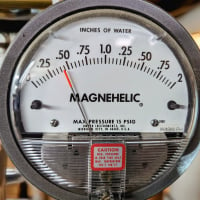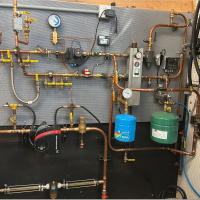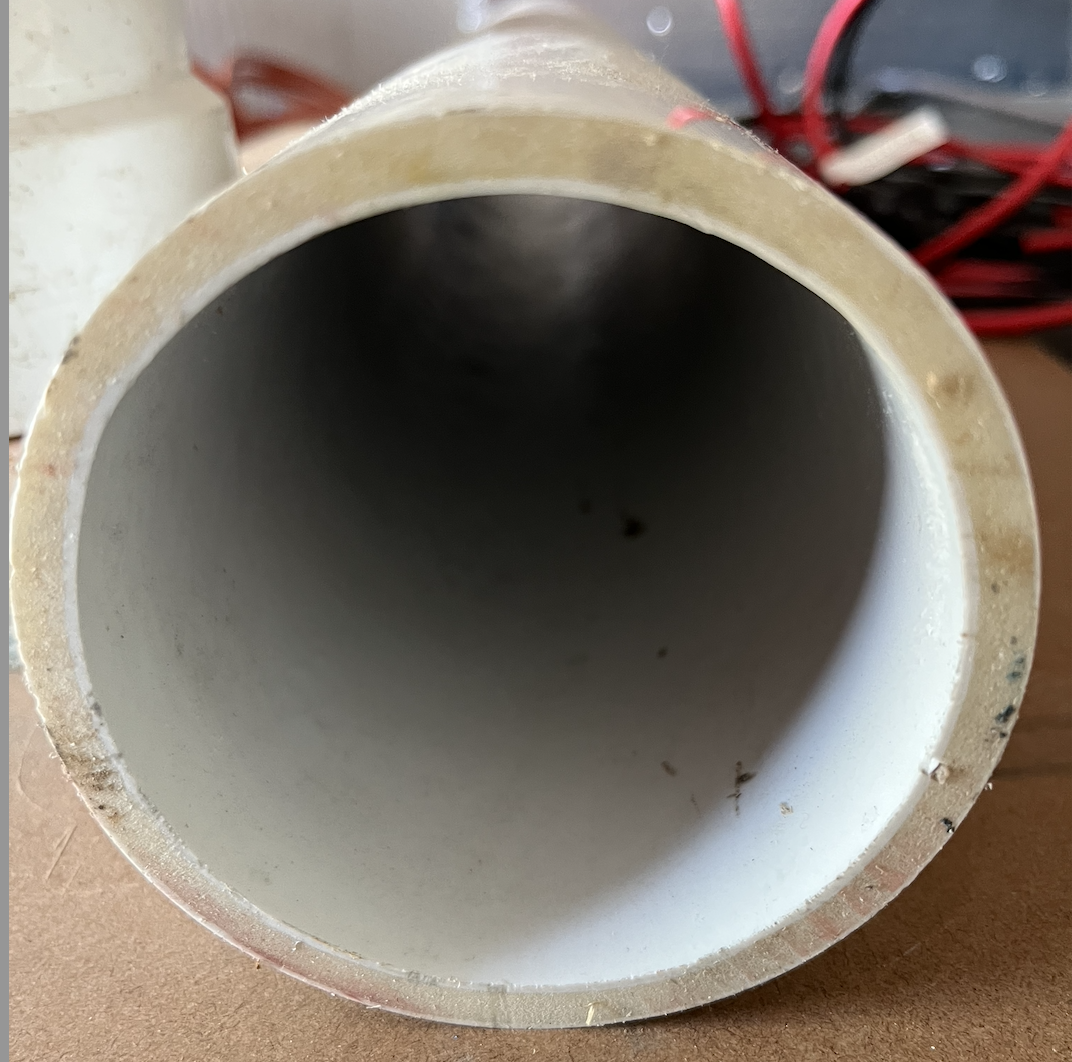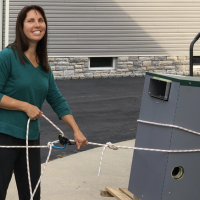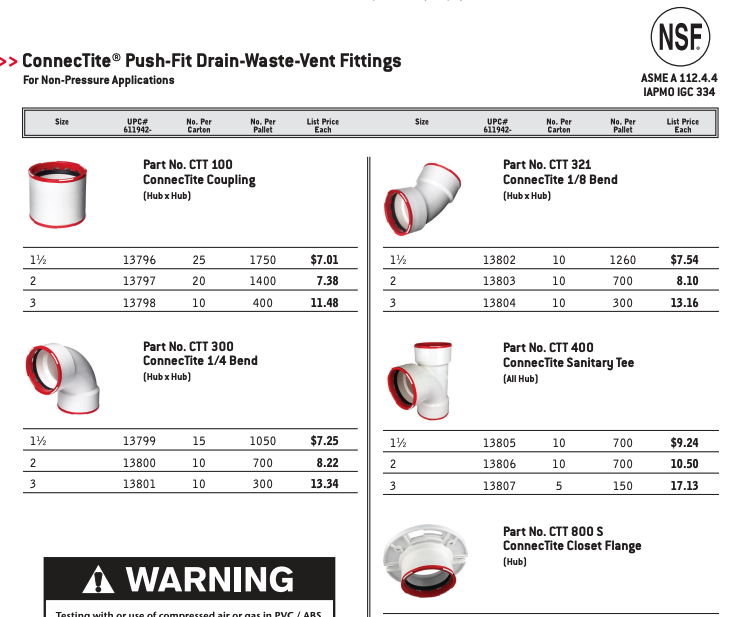Best Material to Use for Drainpipes in Residential Homes.
Comments
-
I've experienced this issue with copper piping in my house from the water heater, as well as steam runouts.
But never pvc drains or pex piping honestly. Both tend to be soft and slippery materials.
Single pipe 392sqft system with an EG-40 rated for 325sqft and it's silent and balanced at all times.
0 -
Had to put that in metric eh…
Single pipe 392sqft system with an EG-40 rated for 325sqft and it's silent and balanced at all times.
0 -
2X4's keep shrinking. This recent purchase is barely 3-3/8.
The pipe is 3-1/2, its OD doesn't shrink like the lumber :) We typically drill a 3-5/8" hole for 3" PVC or ABS.
The only time we dealt with expansion and contraction with slip couplings was log home. The logs shrink and the home settles, so vertical piping had O-ring expansion couplings, or a Fernco with a gap.
A pic of cell core PVC
Bob "hot rod" Rohr
trainer for Caleffi NA
Living the hydronic dream0 -
is that the home depot special? as far as i know the haven't shrunk since about 1970 when they went from 3-5/8" to 3-1/2".
The pvc drain for my laundry tub makes lots of noises when you run hot water through it.
The coefficient of expansion for pvc is about 3x that of copper and copper is a little less than twice that of steel.
0 -
it is like any other piping material, you have to…
ok cool, the way I read it sounded like PVC was worse than others
NJ Steam Homeowner.
Free NJ and remote steam advice: https://heatinghelp.com/find-a-contractor/detail/new-jersey-steam-help/
See my sight glass boiler videos: https://bit.ly/3sZW1el0 -
much worse. that is why vinyl siding is an engineered system that allows all the pieces to move a significant amount. the ends go in to channels that cover the gap and the pieces themselves are hun with the nail in a slot that lets the panel move.
0 -
that was the reference I found. 10c is 50F I think
NJ Steam Homeowner.
Free NJ and remote steam advice: https://heatinghelp.com/find-a-contractor/detail/new-jersey-steam-help/
See my sight glass boiler videos: https://bit.ly/3sZW1el0 -
sorry I keep getting confused. You said it’s just like all materials—it must be supported and installed properly. 7mm over 10 meters per 50 degrees F change doesn’t sound scary to me.
Pipe isn’t siding which can go from -20F to probably ~200F in the sun
NJ Steam Homeowner.
Free NJ and remote steam advice: https://heatinghelp.com/find-a-contractor/detail/new-jersey-steam-help/
See my sight glass boiler videos: https://bit.ly/3sZW1el1 -
In all my years of plumbing we never did anything special for PVC or ABS expansion. At least in residential installations. 70° ambient to maybe 105- 110° drain water temperature is common. So not a lot of movement. Maybe the dishwasher discharges hotter water for a brief period.
The metal roof makes more expansion contraction noise than the plumbing.
I imagine vinyl siding often sees a much wider ∆
Bob "hot rod" Rohr
trainer for Caleffi NA
Living the hydronic dream2 -
the ambient in the dark corners of the basement in winter is probably more like 50f, the water from a shower or washing machine or dishwasher or hot water faucet is over 100f so delta t is more like 50f. All common materials will make noise if you don't compensate for expansion.
The coefficient of liner thermal expansion for:
Steel ~12*10^-6/K
Copper 17*10^-6/K
PVC 52*10^-6/KSo if you have a piece of pvc 10' long and change its temp by about 50f it will change length by about 10ft*25F degrees *52^-6*/K ~= .013 ft ~= 3/16"
1 Kelvin/Celsius degree is 9/5 of a Fahrenheit degree which is close enough to 2 for estimation.
3/16" is a fair bit over a 10' run and longer runs will be proportionally more. If it can't move it will buckle or make noses when it finds a way to move.
Technically it is 3/16 inch 2 Fahrenheit/Kelvin 😄
0 -
Cell-Core PVC looks exactly like regular PVC, just much lighter in weight. Mad Dog
2 -
Guys were using the Cell-Core Foam Core for Mod Con exhausts and they were degrading quickly. That seemed to be the time, they outlawed regular PVC as well. Mad Dog
1 -
No-Hub cast iron has always been the top shelf material here and of course, the plumber installing it has to be of equal quailty as well.
No-Hub cast iron drains, ABS vents. For commercial work or houses over two stories, the materials had to be all metal, so we used DWV copper for the vents.
In the beginning, we used a chain snapper to cut the cast iron, but then transitioned to a chop saw as it was faster and the cuts more accurate.
8.33 lbs./gal. x 60 min./hr. x 20°ΔT = 10,000 BTU's/hour
Two btu per sq ft for degree difference for a slab2 -
-
Foam core is a reference to manufacturing process. Solid and foam core look alike and perform very similar. With exception of weight and labeling, cannot tell difference through examination even on cut surfaces.
Due to lower density foam core transmits sounds more readily. I’ve also seen boiler specification that said foam core PVC cannot be used for venting applications.3 -
FWIW, there used to be available a Sch 30 PVC/DWV in 3" size only.
The Sch 30 fittings would fit inside a 2 X 4 wall. Made it pretty handy. I put a small amount of it in during the 80's.
Eventually got 2 x6 walls. Keeping another stock of the Sch 30 fittings was just another pain. There was a 40 to 30 bushing for transitions.
0 -
-
Cast does seem to last a really long time, most of the time.
But I am genuinely curious how long until this becomes a possibility. PVC and ABS stay nice and smooth.
Obviously you shouldn't be flushing such things regardless, but people are people.
Single pipe 392sqft system with an EG-40 rated for 325sqft and it's silent and balanced at all times.
1 -
-
-
-
What's your vote, Bob? By whatever your definition is. Mine is PVC, it's strong, light, cheap, fast and brainless to install, requiring zero special tools, no heat danger, and will outlast all of us.
NJ Steam Homeowner.
Free NJ and remote steam advice: https://heatinghelp.com/find-a-contractor/detail/new-jersey-steam-help/
See my sight glass boiler videos: https://bit.ly/3sZW1el0 -
through the walls cast
Everywhere else PVC
0 -
pvc is great where it is mostly protected from damage and noise isn't an issue. ci is better where physical protection is a problem. copper is more resistant to damage than pvc but ci is more resistant to some water chemistries. pvc most corrosion resistant but is easily damaged.
0 -
when we were doing custom trophy home work, it was ABS, cast for any risers for upper levels. Inspectors would allow transition per stack, Mission bands with the red label, transition type bands
PVC drainage was not available back in those days, in Utah
I suspect properly installed and protected the plastics will last as long as CI
In Europe i have seen a real thin wall PP type of drainage pipe and fittings
Bob "hot rod" Rohr
trainer for Caleffi NA
Living the hydronic dream0 -
PVC & Copper DWV are nice and smooth, but are rarely reamed at installation, and those ragged, protruding lips are like fishhook on passing detrius..."All pipe shall be reamed."
Mad Dog
3 -
-
Was that in Montana?
(couldn't resist 😎 )
All Steamed Up, Inc.
Towson, MD, USA
Steam, Vapor & Hot-Water Heating Specialists
Oil & Gas Burner Service
Consulting6 -
@ethicalpaul: which pipe has that expansion ratio per 10*?
0 -
That was a reported coefficient of expansion for PVC
NJ Steam Homeowner.
Free NJ and remote steam advice: https://heatinghelp.com/find-a-contractor/detail/new-jersey-steam-help/
See my sight glass boiler videos: https://bit.ly/3sZW1el0 -
-
Just because something is easier doesn't mean it's a bad product.
I wonder how many electricians made jokes when K&T was replaced……….
We all know carpenters made fun of dimensional lumber, that's why "balloon framing" was named.
Single pipe 392sqft system with an EG-40 rated for 325sqft and it's silent and balanced at all times.
1 -
Who said it's a "bad" product? Not I...never..I've installed miles & miles of PVC in the last 40 years. It's a good, better, best choice to me. Mad Dog
0 -
-
-
Actually, it takes alot of practice with PVC to make it look good. You only have a short window of time to make sure everything is pitched correctly, skewed at the correct angles before the glue sets…Mad Dog
2 -
-
-
-
I don’t think so, I watched their video and it did not address removal
Bob "hot rod" Rohr
trainer for Caleffi NA
Living the hydronic dream0
Categories
- All Categories
- 87.3K THE MAIN WALL
- 3.2K A-C, Heat Pumps & Refrigeration
- 61 Biomass
- 427 Carbon Monoxide Awareness
- 119 Chimneys & Flues
- 2.1K Domestic Hot Water
- 5.8K Gas Heating
- 114 Geothermal
- 165 Indoor-Air Quality
- 3.7K Oil Heating
- 76 Pipe Deterioration
- 1K Plumbing
- 6.5K Radiant Heating
- 395 Solar
- 15.6K Strictly Steam
- 3.4K Thermostats and Controls
- 56 Water Quality
- 51 Industry Classes
- 50 Job Opportunities
- 18 Recall Announcements
